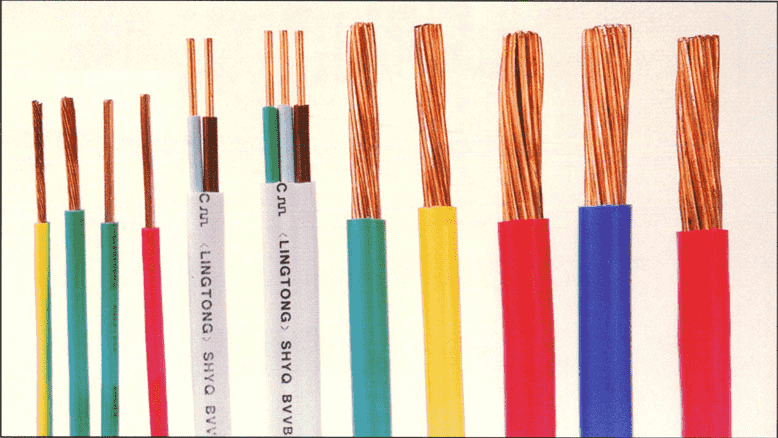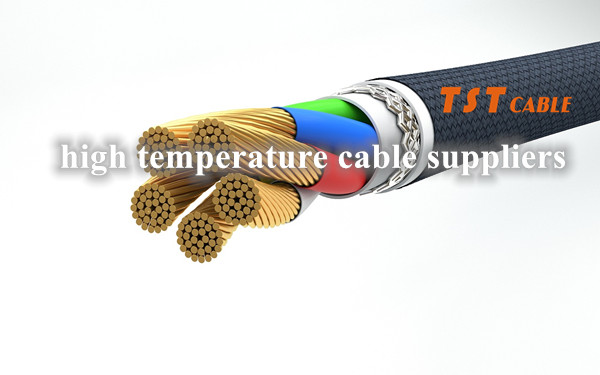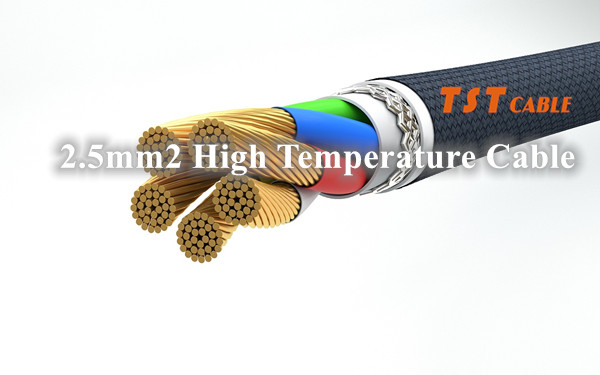The High Temperature Silicone Cables wire and cable manufacturing industry is one of the largest supporting industries in the global economy and occupies a pivotal position in the national economy. With the competition among internationalized specialty enterprises in the cable industry segment, the cable industry will be reshuffled in 2025. A group of wire and cable enterprises that meet the new era will usher in rapid development, and TST CABLES special cables, as a “dark horse” in cables, will have great potential.

What is a special cable?
Special cables are cables used in special occasions, and their functions are also special. For example, there are high-temperature resistant cables, cables resistant to strong acids and alkalis, and cables that are anti-termite. They can be roughly divided into high-temperature resistant cables, special structural cables, and green insulated environmentally friendly cables.
High-Temperature Resistant Cables
High-Temperature Resistant Wires and Cables are needed in aerospace, energy, steel, non-ferrous metal smelting, oil extraction, motors, construction and other fields. High-Temperature Resistant Wires and Cables with long-term continuous working temperatures of 125 degrees, 135 degrees, 150 degrees, 180 degrees, 200 degrees, 250 degrees and above 250 degrees.
Silicone cable of high temperature series
The industrial name of silicone cable is AGR silicone rubber cable, which is made of silicone material. The suitable temperature range is -60℃~200℃. It is generally composed of conductor, insulation layer, shielding layer and sheath.
The conductor is an indispensable part for transmitting current or electromagnetic wave signals. The material is divided into tinned copper wire, silver-plated copper wire, etc. The shielding layer is a component that isolates the electromagnetic field in the cable product from the electromagnetic field outside. The insulation layer of the silicone cable is silicone rubber, which is evenly covered on the outside of the conductor to play an electrical insulation role, to ensure that the transmitted current or electromagnetic wave only propagates along the conductor to prevent leakage to the outside. The sheath can prevent the product from being damaged by the outside world during storage, transportation, use, etc., and can also play the role of anti-aging, waterproof, and anti-mildew.
Silicone cables have high voltage resistance and good acid, alkali, ozone, mildew and oil resistance. They can be used in long-term humid environments. They are very soft and are particularly suitable for large-section single-core and multi-core power cables. They are commonly seen in mobile phone charging cables, headphone cables and other products in daily life. They have excellent user experience and have been used in industrial cables for high-voltage cables of various levels from 35kV to 500kV.
High-temperature silicone cables are special cables designed to work under extreme temperature conditions. They use silicone rubber as insulation and/or sheath materials, which gives the cables excellent heat resistance and other excellent properties.
TST CABLES silicone cables are widely used in rail transit, automobiles, medical treatment, nuclear power, construction, household appliances, electric heating, heavy industry and other fields. With the vigorous development of rail transit and new energy vehicle industries, silicone cables are widely used. In new energy vehicles, silicone cables can connect high-voltage batteries, electronic control units and motors; they can be used as internal connecting wires for high-voltage equipment such as air conditioners and auxiliary heating; they can be used as internal connecting wires for batteries. The following are the main features of TST CABLES high-temperature silicone cables and their application areas:
High-temperature silicone cable features
Excellent heat resistance:
Silicone rubber can maintain its physical and electrical properties over an extremely wide temperature range, and can usually work normally at temperatures from -60°C to +200°C or even higher. Some specially formulated silicone materials can withstand short-term high temperatures of up to 300°C.
Good flexibility:
Even in low-temperature environments, silicone cables show excellent flexibility and elasticity, making them easy to install and wire.
Anti-aging and UV resistance:
Silicone has natural anti-aging ability and good resistance to UV rays, making it suitable for long-term outdoor use.
Chemical stability:
It has good resistance to a variety of chemicals (such as acids, alkalis, and solvents) and is suitable for use in chemical environments.
Excellent electrical insulation performance:
Silicone is an excellent electrical insulator that can provide reliable electrical protection.
Environmentally friendly and non-toxic:
Silicone is an environmentally friendly material that does not contain harmful substances and complies with international environmental standards such as RoHS.
Application areas
Industrial heating equipment:
Equipment such as ovens and drying furnaces that need to work under high temperature conditions are used to connect sensors, motors, and other control devices.
Lighting systems:
Especially those LED lamps or stage lighting equipment that need to be exposed to high temperature environments.
Automotive engineering:
In the engine compartment or other high temperature areas, used to transmit signals or power to various components.
Aerospace:
Because of its light weight and high temperature resistance, it is widely used in the internal wiring layout of aircraft.
Household appliances:
For example, the power cords in kitchen appliances such as microwave ovens and induction cookers, these places require cables to withstand local high temperatures.
Medical equipment:
Some medical devices may need to be subjected to high temperature and high pressure steam treatment during the sterilization process, and silicone cables are very suitable for such occasions.
TST CABLES high temperature silicone cables play an important role in many industries and application scenarios with their unique performance advantages, especially when they need to cope with extreme temperature changes. Choosing the right silicone cable is essential to ensure the safe operation of the system.
High temperature silicone cable manufacturing process
- Conductor selection: High purity copper or silver-plated copper is usually used as the conductor material because these materials can still maintain good conductivity at high temperatures. Sometimes alloy materials that are more resistant to high temperatures are also used.
- Insulation and sheath extrusion: Silicone rubber is extruded to form an insulating layer around the conductor. For multi-core cables, each core is first individually wrapped with a layer of silicone before they are combined and covered with an overall silicone sheath. This step requires precise control of temperature and speed to ensure uniform quality of the silicone.
- Vulcanization: To enhance the physical properties of silicone, the cable is vulcanized during production. This process cross-links and cures the silicone, improving its strength, elasticity, and heat resistance.
- Quality testing: Finished cables undergo a series of rigorous tests, including electrical performance tests (such as resistance measurement), mechanical performance tests (such as tensile tests), and environmental adaptability tests (such as high-temperature aging tests) to ensure that the product meets relevant standards and specifications.
Considerations for selecting high-temperature silicone cables
Operating temperature range: Determine the required operating temperature range based on the specific application scenario and select the appropriate silicone grade.
Flexibility and installation space: Consider the complexity and narrowness of the wiring path and select a cable with appropriate softness.
Chemical resistance: If there are specific chemicals in the application environment, you need to choose a cable that can resist the corrosion of these chemicals.
Cost-effectiveness: Although silicone cables have many advantages, the cost is relatively high, so the cost-effectiveness should be evaluated based on actual needs.
High-temperature silicone cable maintenance
Regular inspection: Especially for cables used in harsh environments, they should be regularly inspected for signs of wear, cracks or other damage.
Cleaning and maintenance: Keep the surface of the cable clean to avoid the accumulation of pollutants such as oil and dust, which may affect the heat dissipation effect of the cable or cause corrosion.
Proper storage: Unused cables should be properly stored in a dry and cool place, away from direct sunlight and chemicals to prevent premature aging.
TST CABLES high-temperature silicone cables play an irreplaceable role in many fields with their excellent heat resistance, flexibility and chemical stability. Understanding its characteristics and the correct selection method can help users better use this special cable to meet specific application needs. At the same time, proper maintenance measures can also extend the service life of the cable and ensure the stable operation of the system.
Also available in:
English





